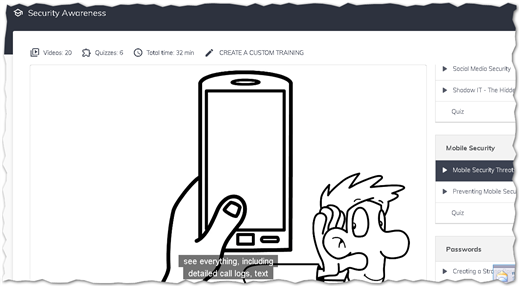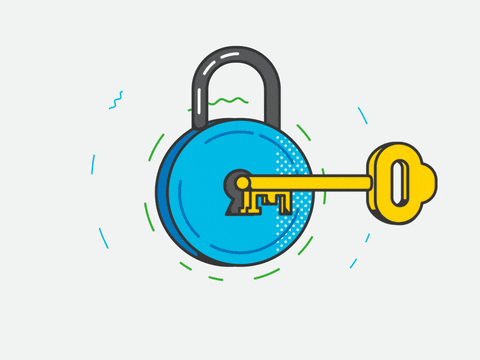Many businesses are still spending hours worrying about compliance, admin and the future. The benefit of having a Sage Business Care plan is that you'll have access to support. Providing this service to our users comes with a sense of responsibility, our teams have access to lots of resources which include partnerships with companies such as Microsoft.
Did you know that there are 4 technologies to keep an eye on? They include:
- Cloud Computing
- Artificial Intelligence
- Big Data
- The Internet of Things (IoT)
"These [big 4] will wipe out big companies if they cannot keep up" says author Tom Sibil, Digital Transformation: Survive and Thrive in an Era of Mass Extinction.
The stakes are huge, firms must adapt. Digital Transformation is a term that is increasingly being used. Defined as the application of a new step function which includes technology of cloud computing, AI, Big Data and IoT.
Since 2000, 52% of Fortune 500 companies have disappeared due to acquisition or bankruptcy, a mass extinction event in the corporate world. The good news is that there is a re-speciation, new DNA of companies emerging, big e-commerce companies like Amazon, Air BnB who are applying these new technologies. They both applied cloud computing and AI focused at retailing. These businesses have changed the way that products are designed, manufactured, delivered, as well as, how customers are served and businesses are managed.
Data is the fuel of AI, businesses with old data can seize the opportunity to change how they do business.
Small Business and modern Cyber Security
One of the latest episodes of the Security in Five podcast (listen to Episode 619 here) advises that acquiring modern cyber security for your small business is accessible. Even if you don't have a budget that you can allocate toward tech security you can still set up strong procedures and policies. There are freely available open source tools that can allow you to secure your business at the level that you need. As the business's complexity grows, you can add another level of security complexity.
When a data breach occurs, know that hackers might be targeting you. Most likely however, they'll use tech to automatically scan lists. A random scan by one of tens of thousands of bots out there is used to look for vulnerabilities on the internet (ex. open FTP servers, old versions of software or versions they know are vulnerable).
Of small businesses that are hacked, roughly 60% close within a year-- these are some scary stats! So a breach is a bankruptcy. Data breaches are an end of business type of event (ensure that you're insured against this*). The risk of being breached needs to be taken more seriously.
In 2018, 90% of users aged 24-34 found that some of their personal information was found on scans of the dark web. Where from? Most likely from the smaller end of businesses out there with breaches who didn't have systems in place to protect data.
If you're starting a small business, protecting your data and having security as part of your business model as your startup costs or costs of doing business needs to be in your mindset. IT can't be the only team responsible, you as a business owner are.
"Security is a business problem, solved, supported and made efficient by technology but also through business process, business mentality ; so at the end of the day , it's a business problem, security is much more than digital assets."
What can you do as a small business to protect data?
To protect yourself or build a cyber security program with or without much expertise, start with:
- Employee Education
- Security awareness training helps make employees aware of threats out there and of any data they have access to.
- Make employees aware of their responsibilities
- Here's a link to free security awareness videos for businesses: Sign-Up For FREE security awareness training here *only available in English

- Track what personal devices are on your network
- It's important to monitor what personal devices are accessing your network and system information. Employees may use their own devices which can add additional threats and exposure to data leaks. Even trustworthy employees may have malicious apps on their devices.
- Make sure employees are managing their accounts properly and that you are deleting inactive accounts for employees who are leaving etc.
- Manage your permissions, don't provide admin access to everybody.
- Activate multifactor authentication or 2 factor authentication on all your company accounts. Don't use services that don't offer this.
- 2 Factor authentication through text messaging (not ideal) or through a code generator mean hackers will need to have access to the physical device in order to gain access.
- Multi factor is one of the best and easiest defenses for account security

- Provide a password manager to all employees
- There are free ones available to keep logins protected, accounts unique, and passwords strong.
- Password managers can help with keeping an inventory or catalogue of accounts and logins.
- A security information event management system for IT (known as SEM) is an investment but extremely useful to have as a system for threat detection.
- Provides visibility to security events so you can catch the outliers
- See Part 3: Demo'ing the O365 Security & Compliance Center! for options provided by Microsoft
Be aware and be safe / sage. There are plenty of solutions available to keep your small business's systems and data secure. If you need expertise, consultants are available to help guide you in building a program and culture to have you carry on implementing a security program. You can do it, not being able to afford this is not an option when one breach is all it takes to be out of business.
Resources:
- Secure your personal and business data against phishing attacks
- How to ensure you’re contacting Sage support
- Part 3: Demo'ing the O365 Security & Compliance Center!
- 7 tips for securing your Sage company data
- Protect your Business: Build a Crisis Team
- Les 4 grands changements technologiques et comment assurer la cybersécurité des données de l'entreprise
Please take a moment to share and rate this article with your subscribers on your social networks. To receive the latest news, follow us on Twitter @SageSupport





